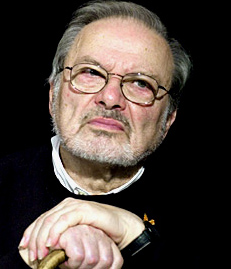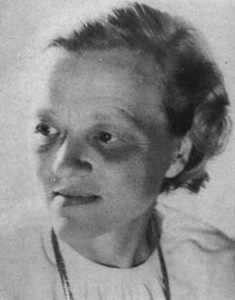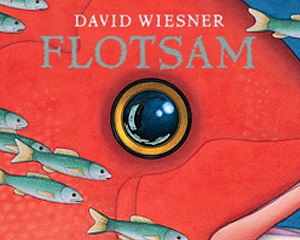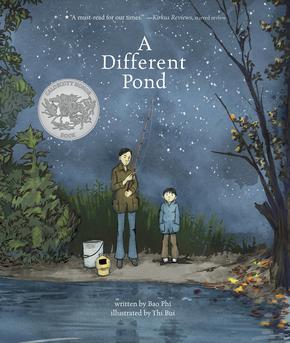Plot
An unnamed little boy imagines a "special house" that is "just a house for Me ME" (the cover artwork shows the boy drawing a picture of the house). He then imagines all the special things that make up the house including a special bed, special shelf, special chairs, a special door, special walls, and a special table. He brings to the special house a turtle, a rabbit, a giant, a dead mouse (in a box, according to the illustration), monkeys, and "some skunkeys and a very old lion". The lion proceeds to eat all the stuffing from the "chairs chairs chairs". The boy plays with the creatures "making secrets" and laughing and running and pretending to be chickens and singing until the play becomes frantic and tumultuous and "nobody says stop stop stop". The boy describes how his house is not really anywhere but "root in the moodle of my head head head": a statement which is complemented with images of the boy apparently asleep in a bed equipped with springs under it, his bouncing off the bed, and, on the following blank pages, him somersaulting through space. The illustrations conclude with an image, at the right bottom of the verso of a pair of blank pages, of the little boy looking mischievously over his shoulder.

Maurice Bernard Sendak was an American author and illustrator of children's books. He became most widely known for his book Where the Wild Things Are, first published in 1963. Born to Polish-Jewish parents, his childhood was affected by the death of many of his family members during the Holocaust. Sendak also wrote works such as In the Night Kitchen, Outside Over There, and illustrated many works by other authors including the Little Bear books by Else Holmelund Minarik.
Ruth Ida Krauss was an American writer of children's books, including The Carrot Seed, and of theatrical poems for adult readers. Many of her books are still in print.

Where the Wild Things Are is a 1963 children's picture book written and illustrated by American author and illustrator, Maurice Sendak, originally published in hardcover by Harper & Row. The book has been adapted into other media several times, including an animated short film in 1973 ; a 1980 opera; and a live-action 2009 feature-film adaptation. The book had sold over 19 million copies worldwide as of 2009, with 10 million of those being in the United States.

Randolph Caldecott was a British artist and illustrator, born in Chester. The Caldecott Medal was named in his honour. He exercised his art chiefly in book illustrations. His abilities as an artist were promptly and generously recognised by the Royal Academy. Caldecott greatly influenced illustration of children's books during the nineteenth century. Two books illustrated by him, priced at a shilling each, were published every Christmas for eight years.

In the Night Kitchen is a children's picture book written and illustrated by Maurice Sendak, first published in hardcover in 1970 by Harper and Row. The book depicts a young boy's dream journey through a surreal baker's kitchen where he assists in the creation of a cake to be ready by the morning. In the Night Kitchen has been described by Sendak as part of a trilogy of books based on psychological development from In the Night Kitchen (toddler) to Where the Wild Things Are (pre-school) to Outside Over There (pre-adolescent). It was a Caldecott Honor recipient in 1971. It was adapted into a five-minute animated short film on January 1, 1987, directed by Gene Deitch and released by Weston Woods. The book drew controversy in the US due to depictions of nudity.

The Hello, Goodbye Window is a children's picture book written by Norton Juster and illustrated by Chris Raschka. Published in 2005, the book tells the story of a little girl who enjoys visiting her grandparents. Raschka won the 2006 Caldecott Medal for his illustrations.

Marie Hall Ets was an American writer and illustrator who is best known for children's picture books.
Janice May Udry is an American author of children's literature, primarily of picture books.
The Lewis Carroll Shelf Award was an American literary award conferred on several books by the University of Wisconsin–Madison School of Education annually from 1958 to 1979. Award-winning books were deemed to "belong on the same shelf" as Alice's Adventures in Wonderland and Through the Looking-Glass by Lewis Carroll, having enough of the qualities of his work.
Paul Oser Zelinsky is an American illustrator and writer who illustrated children's picture books. He won the 1998 Caldecott Medal for U.S. picture book illustration, for Rapunzel. His most popular work is Wheels On the Bus, a best-selling movable book.

Flotsam is a children's wordless picture book written and illustrated by David Wiesner. Published by Clarion/Houghton Mifflin in 2006, it was the 2007 winner of the Caldecott Medal; the third win for David Wiesner. The book contains illustrations of underwater life with no text to accompany them.

Tuesday, written and illustrated by David Wiesner, is a 1991 wordless picture book published by Clarion Books. Tuesday received the 1992 Caldecott Medal for illustrations and was Wiesner's first of three Caldecott Medals that he has won during his career. Wiesner subsequently won the Caldecott Medal in 2002 for The Three Pigs, and the 2007 medal for Flotsam.
Beatrice Schenk de Regniers was an American writer of children's picture books.

Hondo & Fabian is a children's picture book written and illustrated by Peter McCarty. It was released by Henry Holt & Co. in 2002 for ages 2-5. The book follows a day in the life of a dog, Hondo, and a cat, Fabian. Hondo goes on an adventure to the beach and Fabian stays at home with the baby. The story is told through minimal and simple present-tense text and complemented with warm and soft illustrations drawn in pencil and watercolor. Hondo & Fabian was very well received and was recognized with multiple awards including a Caldecott Honor. A sequel, Fabian Escapes, was released in 2007.

Christopher John Rocco, simply known as John Rocco is an American illustrator of book covers and children's books. He is best known for illustrating the covers of books in the Percy Jackson & the Olympians series. He is the sole creator of some children's picture books.

Mr. Rabbit and the Lovely Present, written by Charlotte Zolotow and illustrated by Maurice Sendak, is a 1962 picture book published by HarperCollins. It was a Caldecott Medal Honor Book for 1963 and was one of Sendak's Caldecott Honor Medal of a total of seven during his career. Sendak won the Caldecott Medal in 1964 for Where the Wild Things Are, which he both authored and illustrated. Mr. Rabbit and the Lovely Present was re-issued by HarperCollins in 1999 in hardcover format as part of a project to re-issue 22 Sendak works, including several authored by Zolotow.

Wolf in the Snow is a 2017 wordless picture book by Matthew Cordell. The book was favorably received by critics and won the 2018 Caldecott Medal. The story has drawn comparisons to fairy tales like Little Red Riding Hood. The nearly wordless book tells the story of a girl and wolf who each get lost in the snowstorm. Cordell used distinctive illustration techniques for the girl and the wolf.

Crown: An Ode to the Fresh Cut is a 2017 picture book by Derrick Barnes, illustrated by Gordon C. James. The book, Barnes' first picture book, is a poem describing a boy's feelings and experience while getting a haircut. James, who was not the first choice to be the illustrator, wanted the oil color illustrations to have the feel of fine art.

A Different Pond is a 2017 children's picture book by Bao Phi, illustrated by Thi Bui. The book tells the story of a boy and his father going fishing. Phi created the book because of his desire to have books about people like himself to read to his daughter. Bui's detailed illustrations allowed Phi to remove elements of the prose. Bui, who had never illustrated a traditional picture book before, won praise for her use of colors and was recognized with a 2018 Caldecott Honor. The book received positive reviews and appeared on best of 2017 book lists.

A Big Mooncake for Little Star is a 2018 picture book written and illustrated by Grace Lin. The story is about Little Star gradually eating the mooncake that her mother has baked. The book was a departure for Lin both thematically and in her use of illustrative style. The book was well reviewed and was awarded a Caldecott Honor in 2019. The illustrations feature heavy use of black and rely on both the pictures and words to convey the story and its themes.















